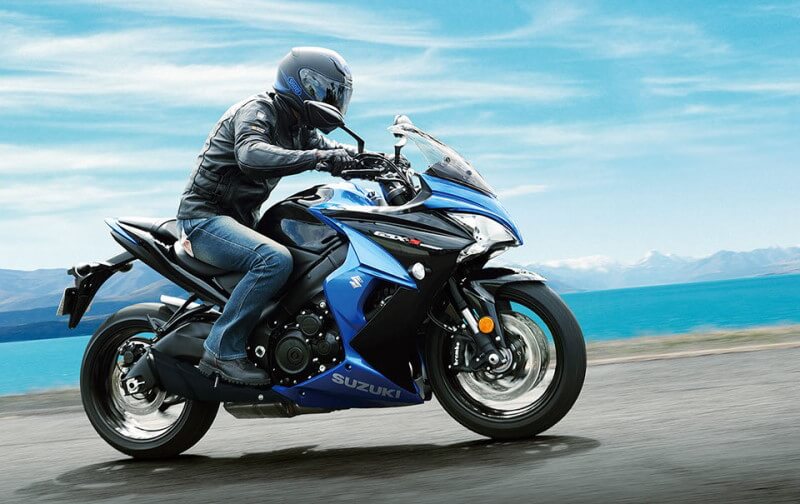
Suzuki Sport Touring Motorcycles: Beginner Options Compared
If you’re at a party, don’t tell anyone you write about motorcycles. They’ll either disappear, leaving you standing awkwardly by yourself (no fun), or they’ll corner you and talk about bikes so much that you miss out on the appetizers (also no fun). Recently, a guy wouldn’t stop talking about how he wished Suzuki would bring back the RF600R, because it was the perfect beginner sport-tourer. I was distracted by the fried okra at the time, but honestly, it is an interesting subject: does Suzuki make sport touring motorcycles good for beginners?
The Suzuki V-Strom 250 checks all the requirements to be the perfect beginner sport-tourer: it's light (414 lb / 188 kg), has a moderate seat height (31.5"), and just enough power to cruise along at freeway speeds.
But it isn’t yet available in the US. So, let’s look at the alternatives, shall we?
GSX-S1000F: Too Fast, Too Furious?

The first thing that any enthusiast would think of when you mention “Suzuki” and “sport touring” in the same sentence, is undoubtedly the GSX-S1000F. But that 999-cc, inline four-cylinder engine unleashes 148 horses and 108 ft-lb of torque. That's way too powerful and too much of a handful to even be considered as a beginner bike.
To put it into perspective, the GSX-S1000F has a power-to-weight ratio of around 0.31 HP / lb, whereas a NASCAR series car runs at around 0.26 HP / lb. In other words, pound-for-pound, the GSX-S1000F is about 20 percent more powerful than a NASCAR racing car.
V-Strom 1050: Wear Your High Heels
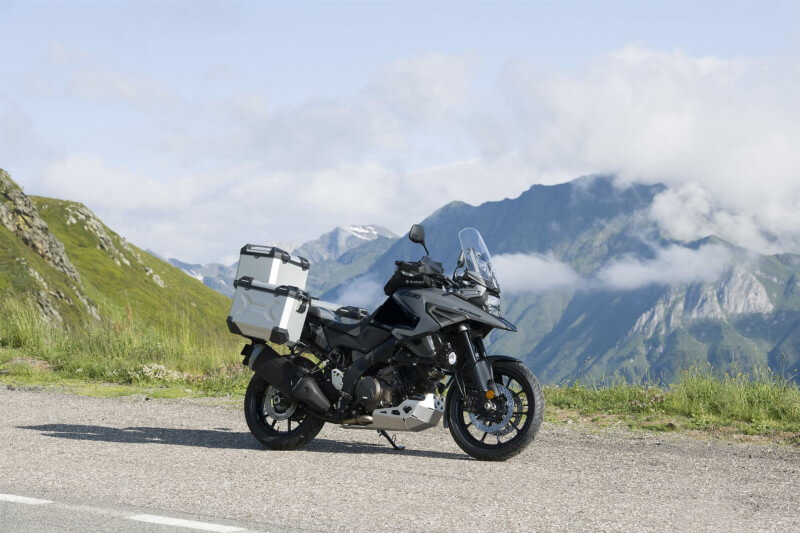
Another option would be the V-Strom 1050. Suzuki pitches this more towards the adventure than the sport side of the adventure - sport touring spectrum, but the V-Strom 1050 can certainly handle twisties competently. The bike features a ride-by-wire throttle, which means you also get rider modes (three of them), and traction control with four user-selectable sensitivity levels.
But again, this is a tall and heavy bike. The 520-lb curb weight is almost literally a quarter ton of bricks (or bike) to heft. The seat height at 33.5 inches makes it difficult to flatfoot the ground from the saddle if you’re anything under 6 feet tall. As a beginner, all this can be intimidating.
V-Strom 650: The Healthy Compromise?
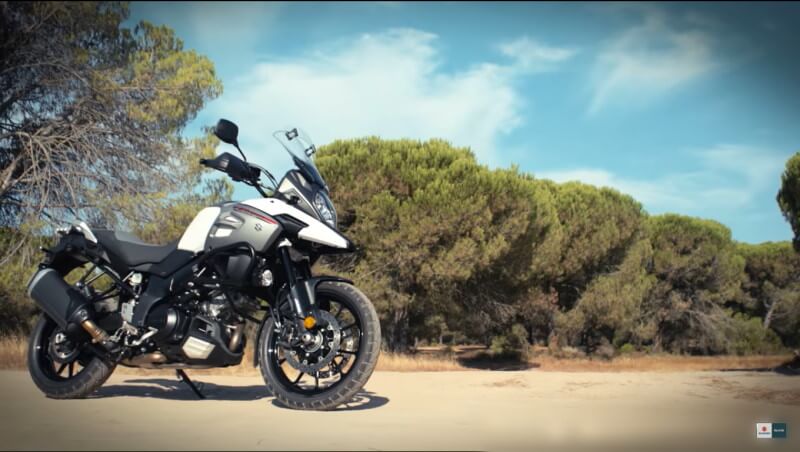
The 1050’s little sister, the V-Strom 650, might be a better option. It’s a whopping 50 lb lighter than the 1050, and its 649-cc V-twin produces 69 HP -- more than enough to get you on the wrong side of the speed limit on any US road. Like on the bigger bike, you still get ABS and traction control (with one less mode).
That said, some riders have complained that the 650’s ABS doesn’t work very well off-road, sometimes cutting in when it shouldn’t. And there isn’t an easy way to turn off the ABS. What’s more, although lighter than the 1050, the V-Strom 650’s 470 lb curb weight doesn’t exactly feel light when you’re trying to lift the bike out of a ditch on an off-road trail. And its seat height is still a rather lofty 33 inches. Which leads us to the next option…
SV650: A Sport Tourer in Sheep’s Clothing
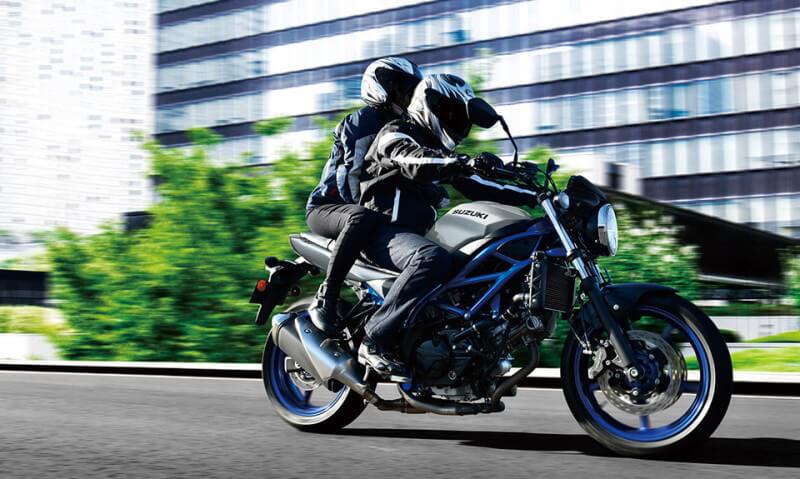
Okay, before you say that the SV650 is not a sports tourer, just hear me out. Fact one: the SV650 has a relatively upright riding position. You certainly sit more comfortably upright on the SV650 than, say, on the KTM 1290 Super Duke GT or even the GSX-S1000F, both of which are hailed as superb sport-tourers.
Fact two: The bike doesn’t have rider modes or fancy electronics, but it doesn’t need them either. The 645-cc V-twin serves up 75 HP in such a smooth manner that you don’t have any surprises waiting for you at any throttle position. And, at a curb weight of 437 lb, and 30.9-inch seat height, the bike is much, much easier to manage than the other taller, heavier Suzukis.
Fact three: The suspension is well-balanced. The setup isn’t so firm that it tires you out on rough roads, and it isn’t so soft that it feels wobbly around corners. Pretty much what you’d expect on a sport-touring motorcycle. The ground clearance is only average, but 5.3 inches is only 0.2 inches less than the clearance on the GSX-S1000F. Plus, the seat is pretty comfortable even for two-up riding.
Fact four: The fuel capacity is a decent 3.8 gallons. This is obviously much less than on rivals like the S1000F or the V-Strom 1050, which have 4.4- and 5.2-gallon tanks, respectively. But the SV650 is a more frugal bike than the other two, so you still get a real-world range of about 170 miles, which isn’t bad at all.
Fact five: Given its popularity as an extremely approachable and easy-to-ride motorcycle, the SV650 enjoys a great range of aftermarket parts and accessories. Handlebar risers, windscreens, suspension upgrades, aftermarket exhausts, luggage - pretty much anything you need is a Google search away.
So, I rest my case.
But if you’re still thinking wistfully about the V-Strom 250 that isn’t available in the US, well, I have an idea for you.
GW250: Pretty? No. Perfect? Almost.
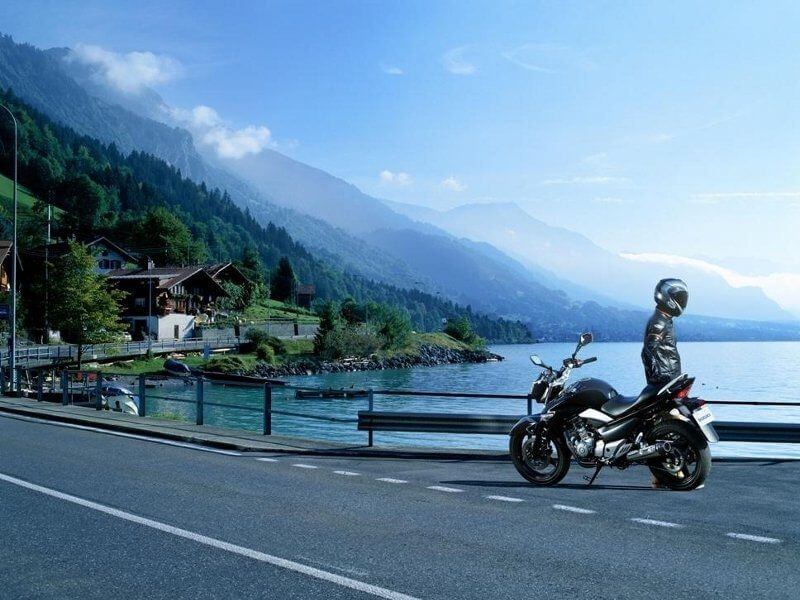
If you haven’t heard of the GW250 before, I don’t blame you. While the V-Strom 250 got a fair bit of press attention, if only to say that it isn’t going to be available Stateside, the GW250 was launched a couple of years ago without much fanfare. But you might find it interesting to know that the GW250 is the platform on which the V-Strom 250 is based. In fact, the engine in the V-Strom 250 is taken directly from the GW250, albeit in a slightly different tune.
Part of the reason for the lack of attention for the GW250 could be its looks: it isn’t the prettiest bike to look at, to be honest. The other part is that on paper, this bike doesn’t seem very interesting. A parallel twin that displaces 249 cc and makes just 24 HP? Sounds boring. But trust me, there’s more to this bike than meets the eye.
For one thing, this is an undersquare engine, i.e., the stroke is greater than the bore (apologies for the jargon). What this means is that the pistons move a slightly longer distance to displace the same volume, compared to most other engines in this class. In the real world, this translates to excellent usable torque. This bike isn’t blindingly fast, but when you twist the throttle, there’s always acceleration available and at every RPM all the way till redline.
For context, consider the Kawasaki Versyx-X 300, a light sports tourer that also has a twin-cylinder engine. It makes 19.2 ft-lb of torque, 3 ft-lb more than the GW250. But you have to rev it all the way up to 10,000 RPM to get this torque, while in the GW250, it’s available at 6,500 RPM.
All of this is good for touring, and better still, the engine features a gear-driven balancer shaft, which eliminates vibrations entirely. As you might expect, an exceptionally refined, vibration-free ride is also quite welcome on a tourer.
The party piece of the GW250, though, is its suspension. It is superbly plush, and when you set the adjustable preload on the rear correctly, it handles bumps and corners with equal aplomb. There’s also plenty of space for the pillion as well as for mounting luggage.
There are only two drawbacks. First, it doesn’t have ABS. The brakes deliver good stopping power and progressive feel, but it’s always nice to know that ABS has your back, should you need it. Second, the bike is underpowered. In 6th gear, it will cruise along at 70 MPH comfortably at around 8,000 RPM. On this bike, 8,000 RPM feels effortless and you can comfortably do that all day, but by the time you reach 85 MPH, the engine is already at redline.
Still, just remember this: the GW250 costs just $4,099, which is less than half the price of any other motorcycle on this list, barring the SV650, which is priced at $7,499 for the ABS version.
Verdict
If I had to choose, I would buy the SV650 over the V-Strom 650. It’s lighter, lower, easier to handle, and more than $1,000 cheaper. It doesn’t have as much off-road ability, but the V-Strom is really just a “soft roader”, unless you’re considering the (even more expensive) hardcore XT variant. With a few mods, the SV650 can be a far more rewarding and versatile addition to your garage than any other motorcycle here.
But if you’re open to non-Suzuki alternatives for sports touring motorcycles, you should check out this list of the top most lightweight touring motorcycles.
